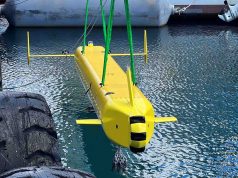The US Defense Advanced Research Projects Agency (DARPA) is advancing its X-plane development program that will aim to demonstrate an aircraft design based on active flow control (AFC).
The agency announced on July 20 it selected three performers to work on developing the Control of Revolutionary Aircraft with Novel Effectors (CRANE) program.
According to DARPA, the goal is to demonstrate significant efficiency benefits of AFC, as well as improvements in aircraft cost, weight, performance, and reliability.
For the CRANE program, DARPA has defined active flow control as the on-demand addition of energy into a boundary layer for maintaining, recovering, or improving vehicle aerodynamic performance. CRANE is excluding already proven techniques that use large external moving surfaces, mechanical vectoring of engine jet exhaust, or other traditional moving aerodynamic control devices.
“The performers are looking at using active flow control very early in the design scope. That’s the differentiating piece that hasn’t been done before,” said Alexander Walan, the program manager for CRANE in DARPA’s Tactical Technology Office. “AFC has been explored at a component level, but not as an integral piece of aircraft design. By altering the design approach, CRANE seeks to maximize the chance of a successful X-plane development while also integrating AFC into the aircraft’s stability and control.”
The program is kicking off Phase 0, a long conceptual design phase to give performers time to evaluate flow control options before solidifying their demonstration approaches.
Phase 0 participants include Aurora Flight Sciences, Lockheed Martin and Georgia Tech Research Corporation. Phase 0 awards will comprise multiple conceptual design trades, active flow control component testing, multi-domain analysis and optimization, concept down selection, and a conceptual design review.
“Active flow control technology has matured at the component level to the point where a potential leap forward in aircraft technology is possible,” said Walan. “We see an opportunity with CRANE to open up the future design space for both defense and civilian applications.”



























